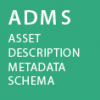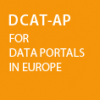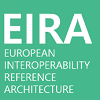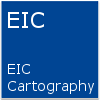Recommendation 31 | Interoperability layer: Semantic interoperability
Put in place an information management strategy at the highest possible level to avoid fragmentation and duplication. Management of metadata, master data and reference data should be prioritised.
Solutions
| List of all available solutions that implement this recommendation |
|---|

|
ADMS contributes to more efficient management of metadata for public officials. |

|
The use of CPSV-AP to describe Catalogues of Public Services helps to avoid fragmentation and duplication of data related to public services and in turn helps to ensure appropriate management of metadata, master data and reference data. |

|
DCAT-AP provides a European standard for metadata publishing. |

|
eARK Knowledge Centre contributes to harmonising currently fragmented archival approaches for ingest, preservation and re-use of data, thus putting in place an information strategy to avoid fragmentation and duplication. |

|
eCertis puts in place an information management strategy to avoid fragmentation and duplication of information. |

|
The semantic view of EIRA takes into account the existence of master data and descriptive metadata policy. |

|
Trans European Systems managed by the Commission, through the identification and elimination of overlaps and through maximizing reusability to the benefit of those using these systems, public administrations included. This could guide public administrations in establishing information management strategies. |

Location Framework Blueprint
|
The EULF Blueprint contributes to the implementation of this recommendation in several ways. EULF Blueprint recommendation 1 states that location information strategies should be integrated with digital government strategies in all legal and policy instruments. This helps to ensure appropriate location information management. EULF Blueprint Recommendation 7 includes guidance on spatial data infrastructure assessment and improvement, including use of reference data. EULF Blueprint recommendation 13 provides several requirements with regard to the management of metadata by public administrations. More specifically, it encourages the implementation of an agreed metadata standard across the public sector, which is based on or is consistent with the INSPIRE approach. |

|
IMAPS helps to assess the transparency and organisation of the data management processes at the public administration. This is assessed through question B4 of the IMAPS questionnaire. |

|
The Reference Architecture helps public administrations to establish a data management strategy in relation to eDocuments. |
| VocBench3 allows for management of metadata and common vocabularies by public administrations by providing a common platform that provides several functionalities to its users. | |

SIMAPS v1.0.0 |
SIMAPS assesses the behavioural aspects of a digital public service, from the semantic interoperability viewpoint. Question D7 of the Service Delivery section of the SIMAPS questionnaire assesses whether the semantic formats used by a public services are defined bilaterally between MSs, under EU/international level standards/specs or, based on the semantic interoperability specifications listed in ELIS (e.g. Resource Description Framework - RDF). |




